Lunar sample science updates straight from Hong Kong | Moon Monday #252
A volcano of new results which have improved our understanding of our cosmic companion.
I attended the International Lunar Sample Research Symposium (ILSRS) at the University of Hong Kong the past two days. It was fantastic, especially when you consider the sheer flux of novel lunar science results that researchers presented based on analysis of fresh lunar samples brought to Earth by China’s Chang’e 5 and Chang’e 6 missions. While it’s not possible to cover everything that was presented and discussed at the packed symposium, below is my attempt to pick out all the globally relevant highlights along with links to either their published papers or their submitted & accepted abstracts as reviewed by an international scientific organizing committee.
To set the stage, here is a look at Moon samples from China’s Chang’e 5 nearside landing mission as well as the Chang’e 6 farside one. 🌙
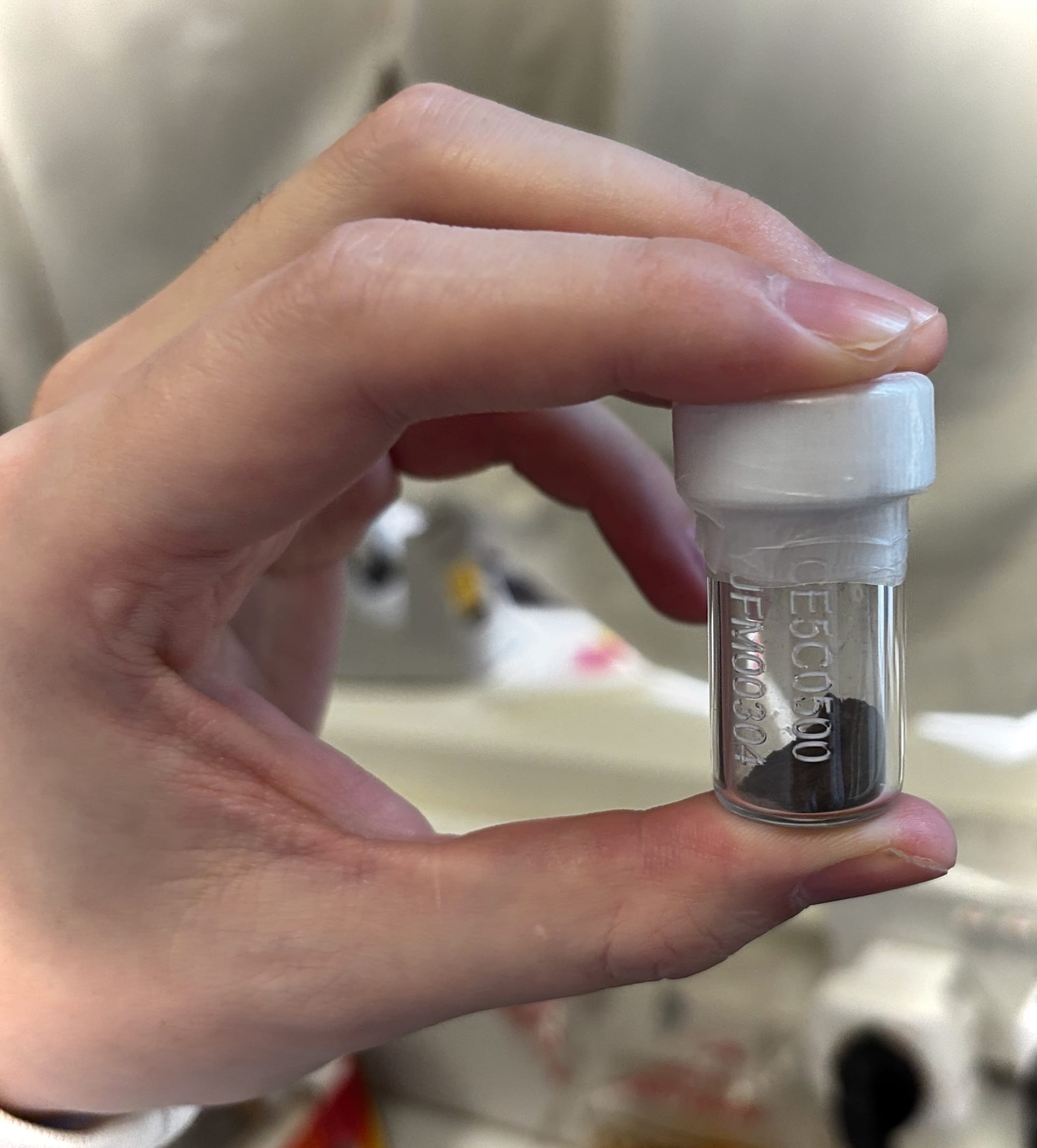
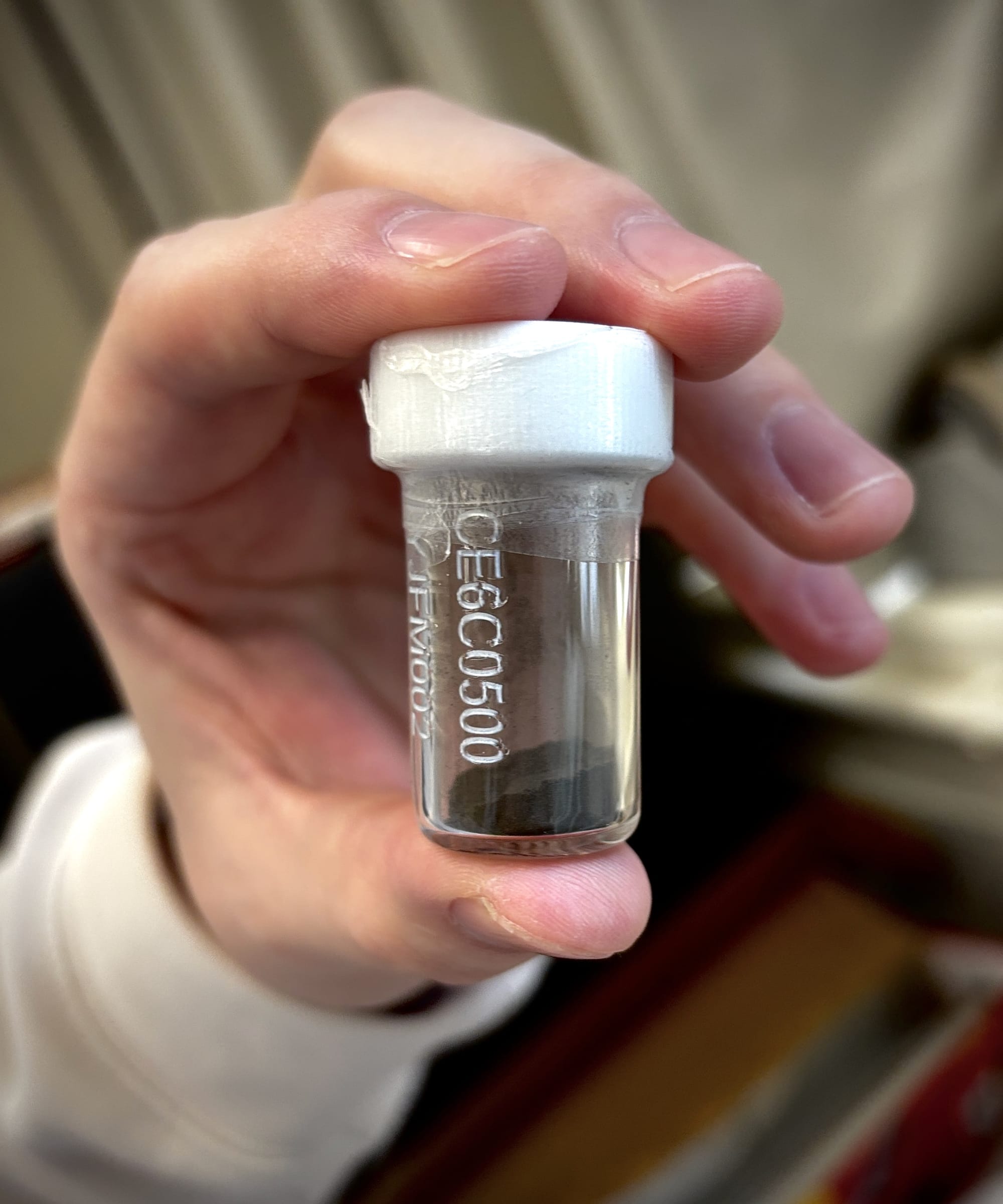
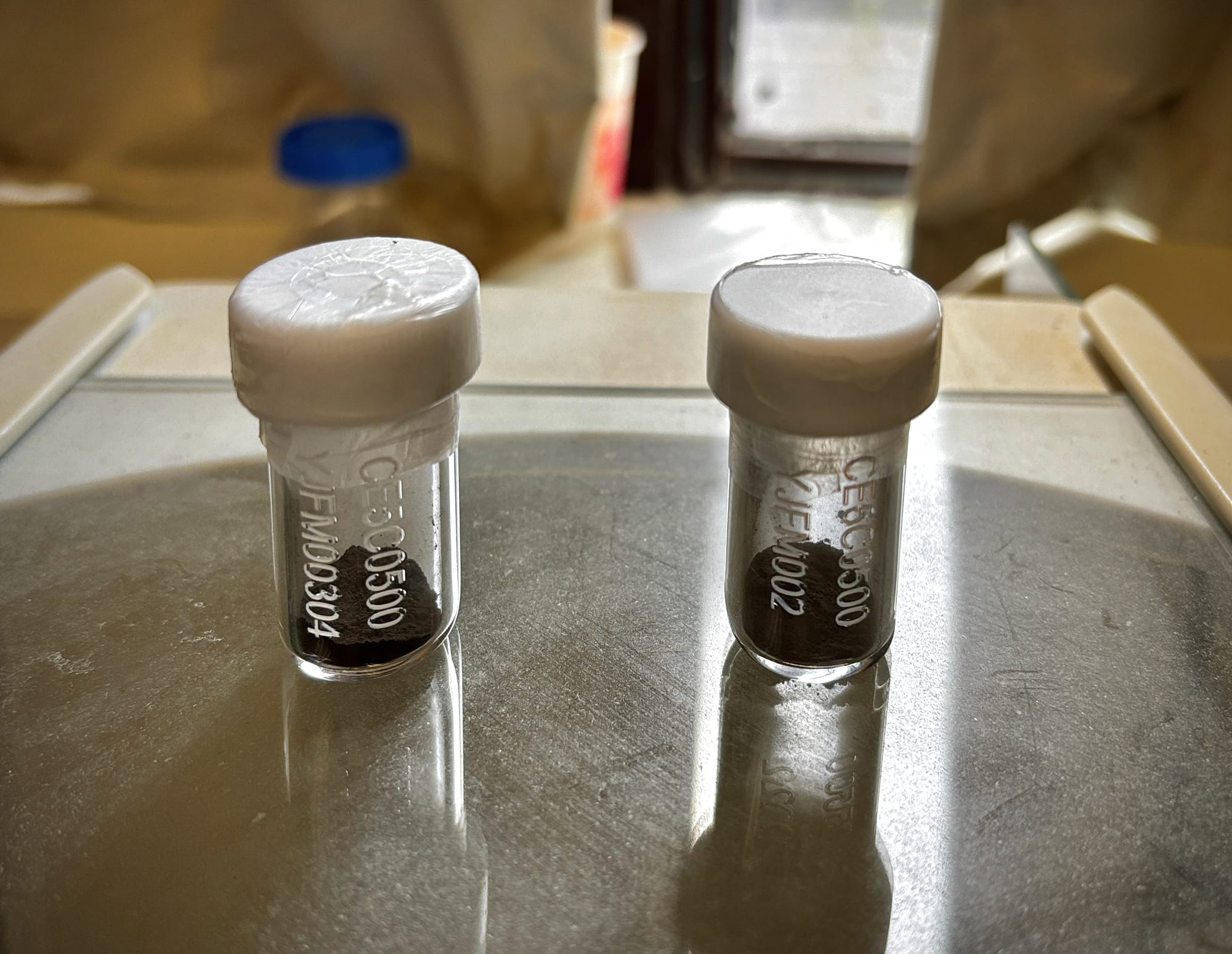
The right intent
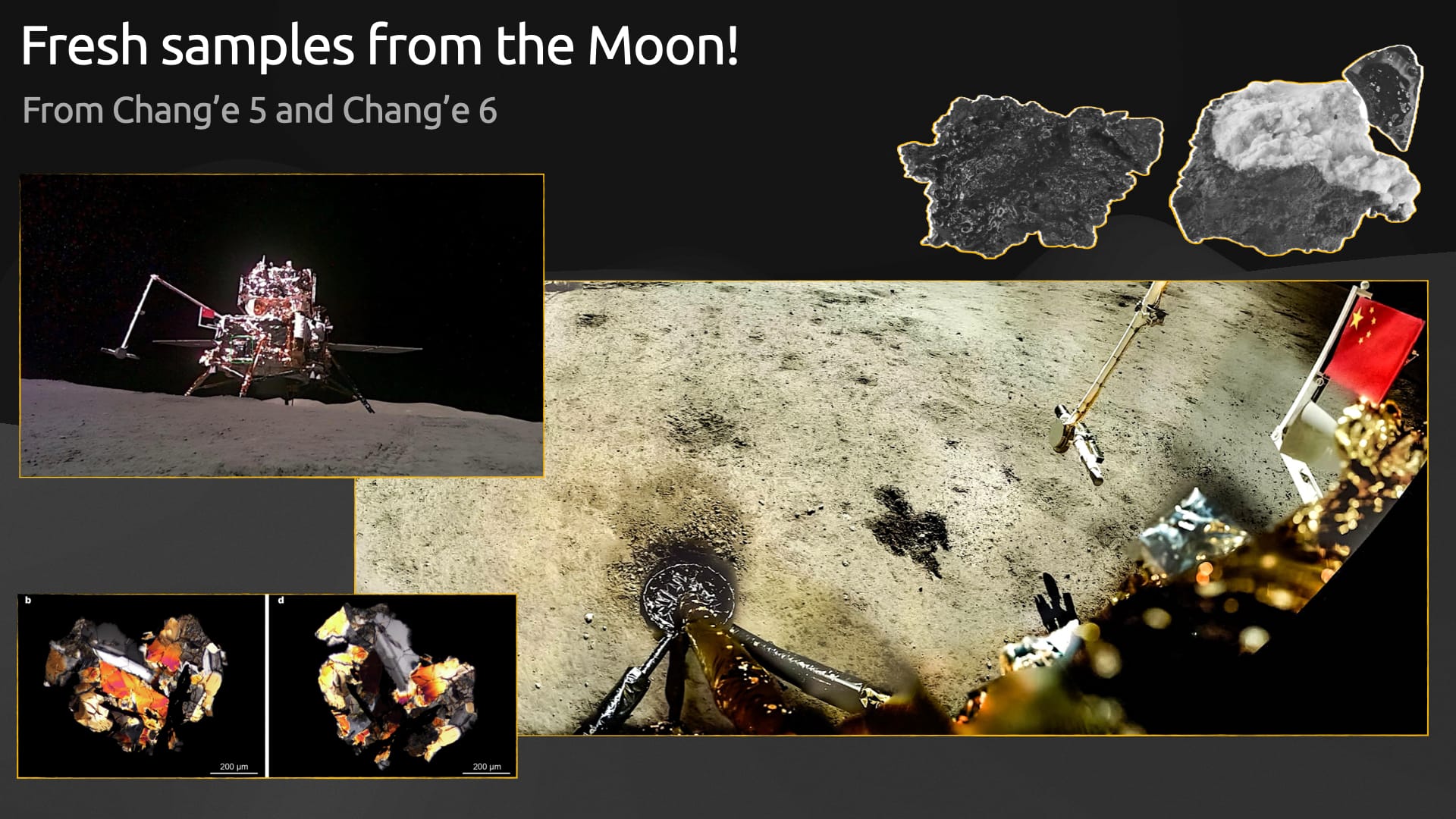
The ILSRS conference organizers were the University of Hong Kong (HKU) and the Institute of Geology and Geophysics of the Chinese Academy of Sciences (IGG CAS). They made efforts to reach out to many scientists and people in lunar communities internationally to attend the symposium as the stated intent was to exchange lunar science findings with the global community and enhance international coordination mechanisms for planetary exploration in China. It’s precisely why the symposium was held in Hong Kong, which allows visa-free access for 170 countries worldwide (including India where I come from) as opposed to hosting one in mainland China for which a roundtrip might be more difficult, especially for US researchers. Even the symposium’s abstract submission format was identical to the popular US-based Lunar and Planetary Science Conference to make it easy for international as well as Chinese researchers to propose their findings to be evaluated for ILSRS talks and posters.
Fuyuan Wu, a leading organizer of ILSRS and a professor at IGG CAS, stressed when he said the following in his opening remarks:
There is a need for more international collaboration and information exchange in lunar exploration.
Guochun Zhao, a professor at HKU and a co-organizer of ILSRS, followed up with similar introductory remarks and noted the following:
No single nation can tackle the complexity of planetary exploration alone.
A volcano of lunar sample science findings
A study at the heart of ILSRS concerns Chang’e 6 samples helping determine the age of the massive South Pole-Aitken (SPA) basin—within which the spacecraft landed—as 4.25 billion years. Spanning 2500 kilometers, the SPA basin is the Moon’s largest, deepest, and oldest impact crater. Researchers analyzed 1600 fragments from five grams of Chang’e 6 samples and found 20 relevant pieces to determine this truest age yet of the massive basin. SPA’s exact age and nature of formation has huge implications for understanding how our Moon evolved, and our Solar System too. Many implications were debated at the symposium to work towards a consensus on the next set of measurements we should make globally on future missions to advance this frontier. A presentation by Huijuan Zhang et al (abstract link) discussed one such aspect of structural and chemical differences between the interiors of farside and nearside lunar regions.

The impact that created the SPA was so colossal that scientists think it changed the physical and chemical makeup of the Moon’s mantle down to hundreds of kilometers. And that’s exactly what Chang’e 6 sample studies presented at ILSRS have found, such as a morphed mantle source for volcanism on the Moon’s farside. The dominant Chang’e 6 samples are lava bits which erupted ~1.4 billion years after the SPA event, which morphed the mantle. The Chang’e 6 volcanic materials thus exhibit a unique makeup compared to other volcanic lunar samples. A study of 16 fragments scooped up by Chang’e 6 found them severely lacking elements such as titanium and thorium.
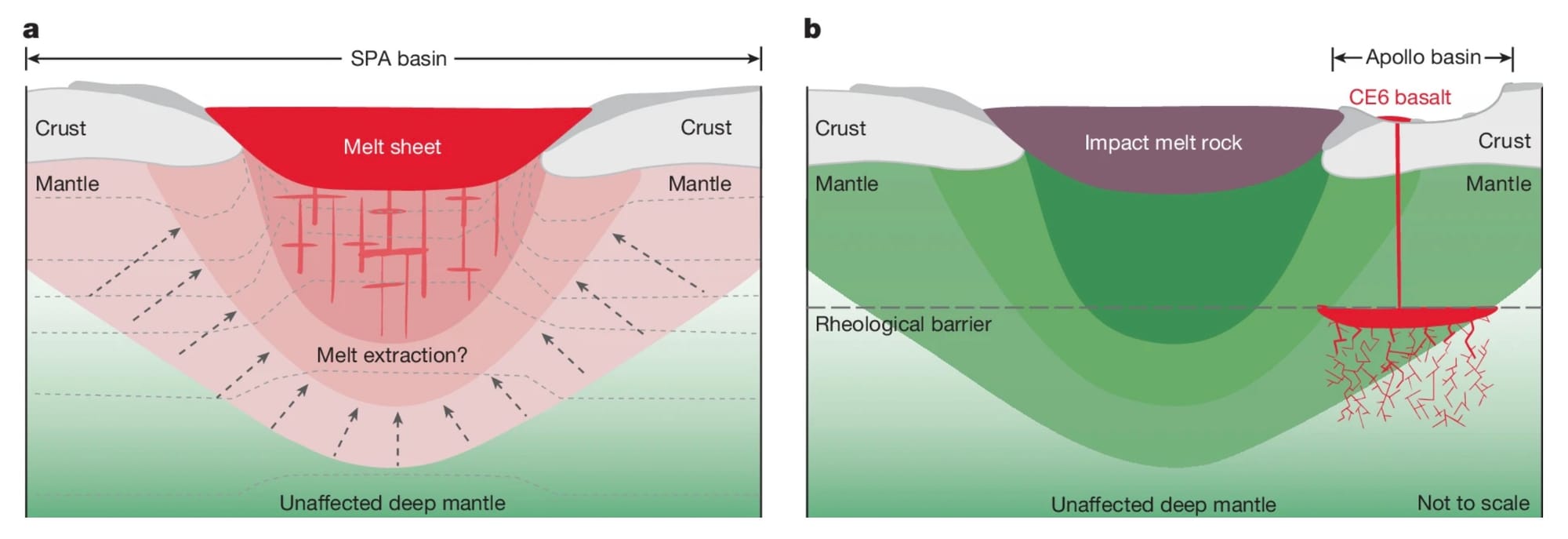
James Head of Brown University presented puzzling findings and observations about young volcanic features on the Moon which are potentially only a few hundred million years old. Chang’e 5 samples have confirmed 2-billion-year old lunar volcanism on the Moon while also finding what seem like 120-million-year young volcanic beads. Collectively, these studies have opened up more enigmas about the Moon’s interior and its evolution. Head noted that combined with new observations from orbiters around the world—including Chandrayaan 2 and KPLO—these studies are helping set the stage for specific measurements to be made by a future NASA CLPS mission which will land in the unique volcanic place of Ina later this decade to help resolve some fundamental mysteries.
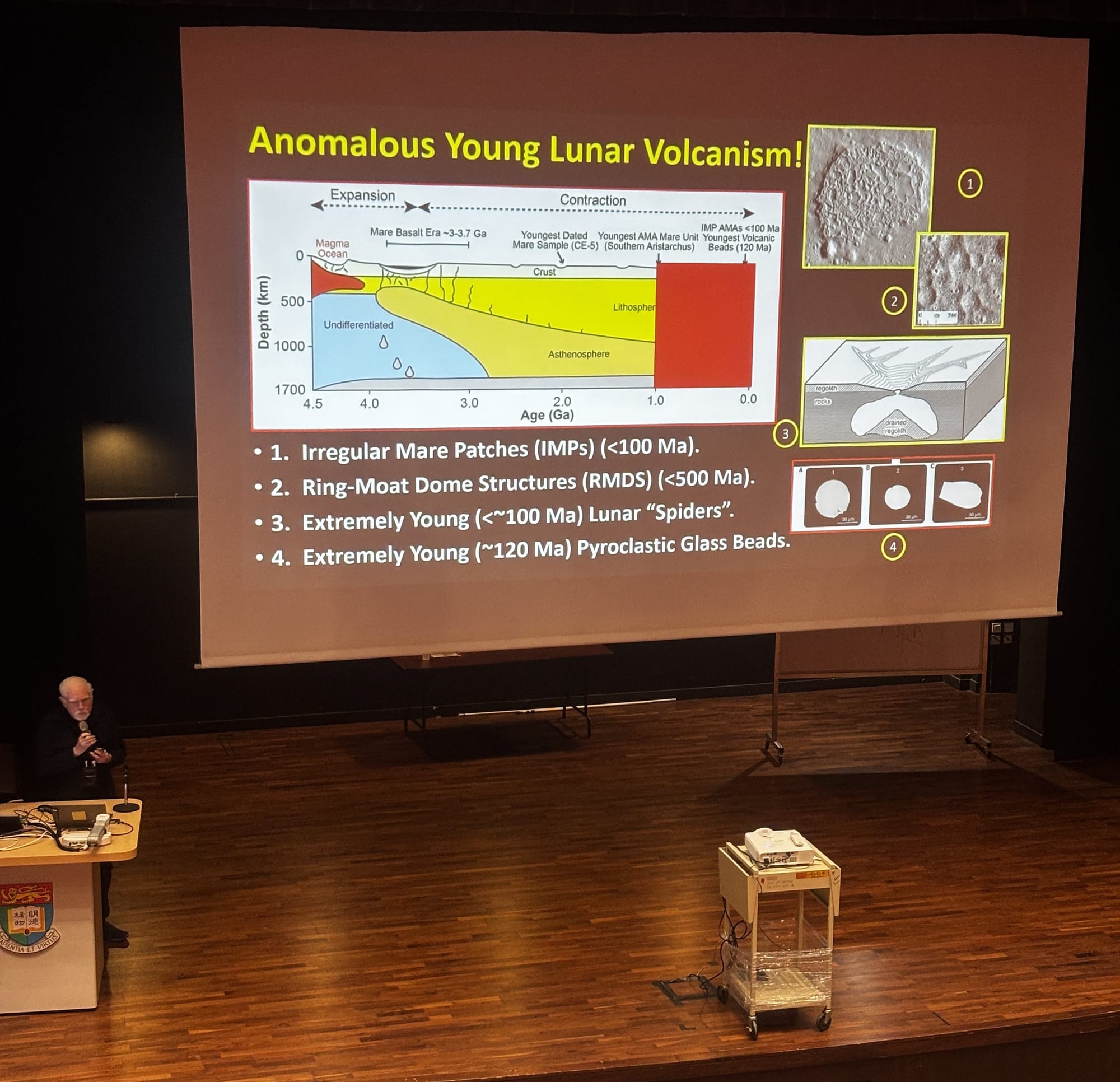
Quentin Parker of HKU presented about their upcoming 12U-CubeSat based Lunar Flash orbiter being built in collaboration with Chinese-mainland-based ASES. Largely funded by the Hong Kong government at almost $100 million HKD, the 100-kilometer altitude polar-orbiting satellite will monitor flashes of meteorite impacts on the Moon’s farside to determine its poorly constrained sizes, rate and potential impact (pun intended) on long-term robotic and crewed exploration. Combined with more such data from other missions, it will help us understand risk from micrometeorites to better plan future humans, habitats, and hardware on the Moon’s south pole. Relatedly, last year ESA approved the LUnar Meteoroid Impacts Observer (LUMIO) CubeSat mission with a similar purpose. ESA aims to launch LUMIO in 2027 to the second Earth-Moon Lagrangian point (EM-L2) from where it can continuously observe the Moon’s farside. The CubeSat also aims to demonstrate autonomously determining its position in space and navigating accordingly, independent of communications with Earth, something China pioneered with its DRO lunar craft recently.

Sen Hu of IGG CAS spoke about how the Moon’s farside mantle contains less water than within the nearside as measured by Chang’e 6 and 5 samples respectively. These new measurements have added to the debate on the topic by lending tactile credence to the hypothesis that our Moon indeed lost most of its water during its fiery formation. CASC’s previous news release on the Chang’e 6 study had noted how Francis McCubbin, NASA’s Astromaterials Curator and a peer reviewer of the paper, called the work “a landmark study on the water abundance of the lunar farside.”
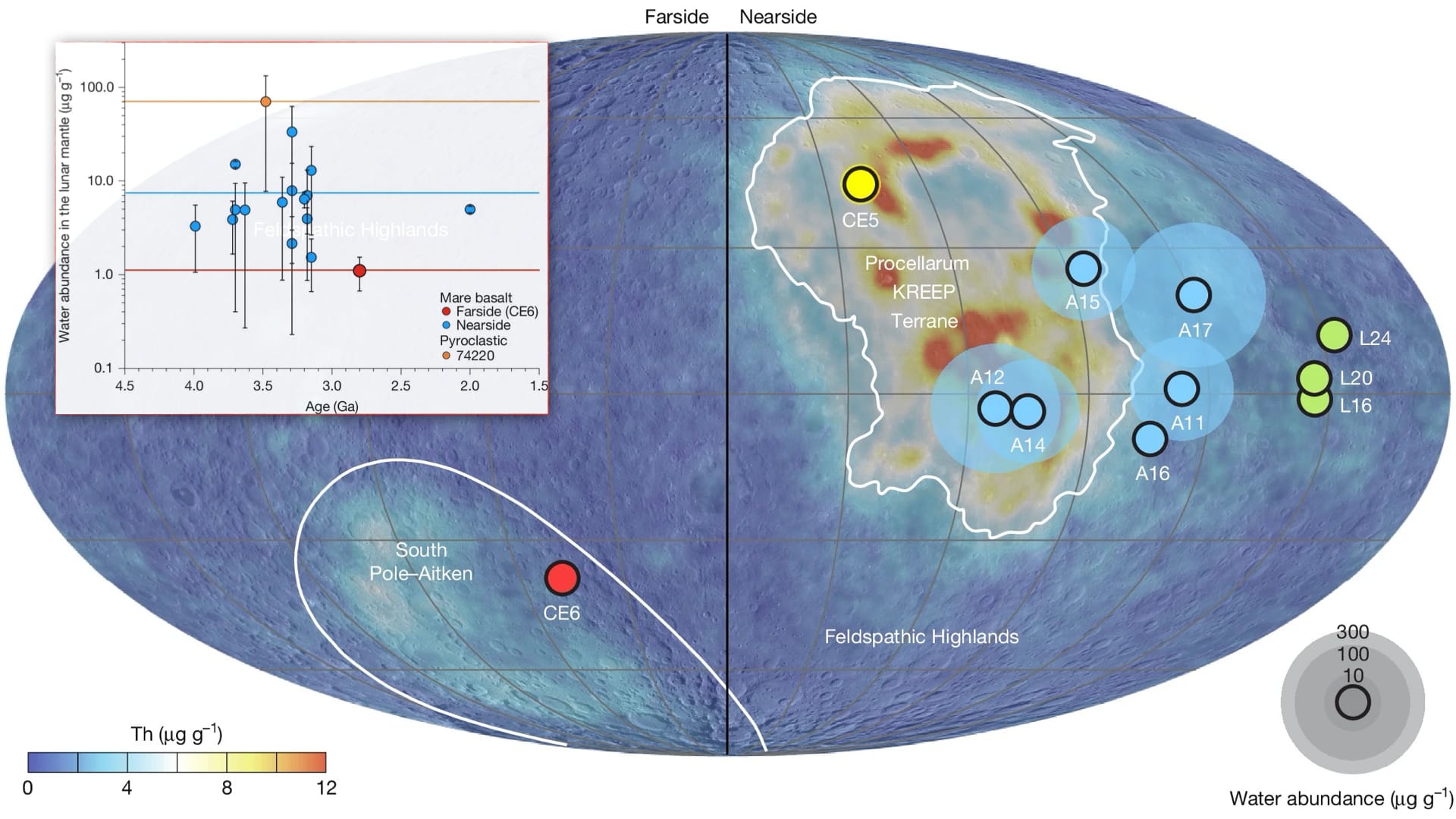
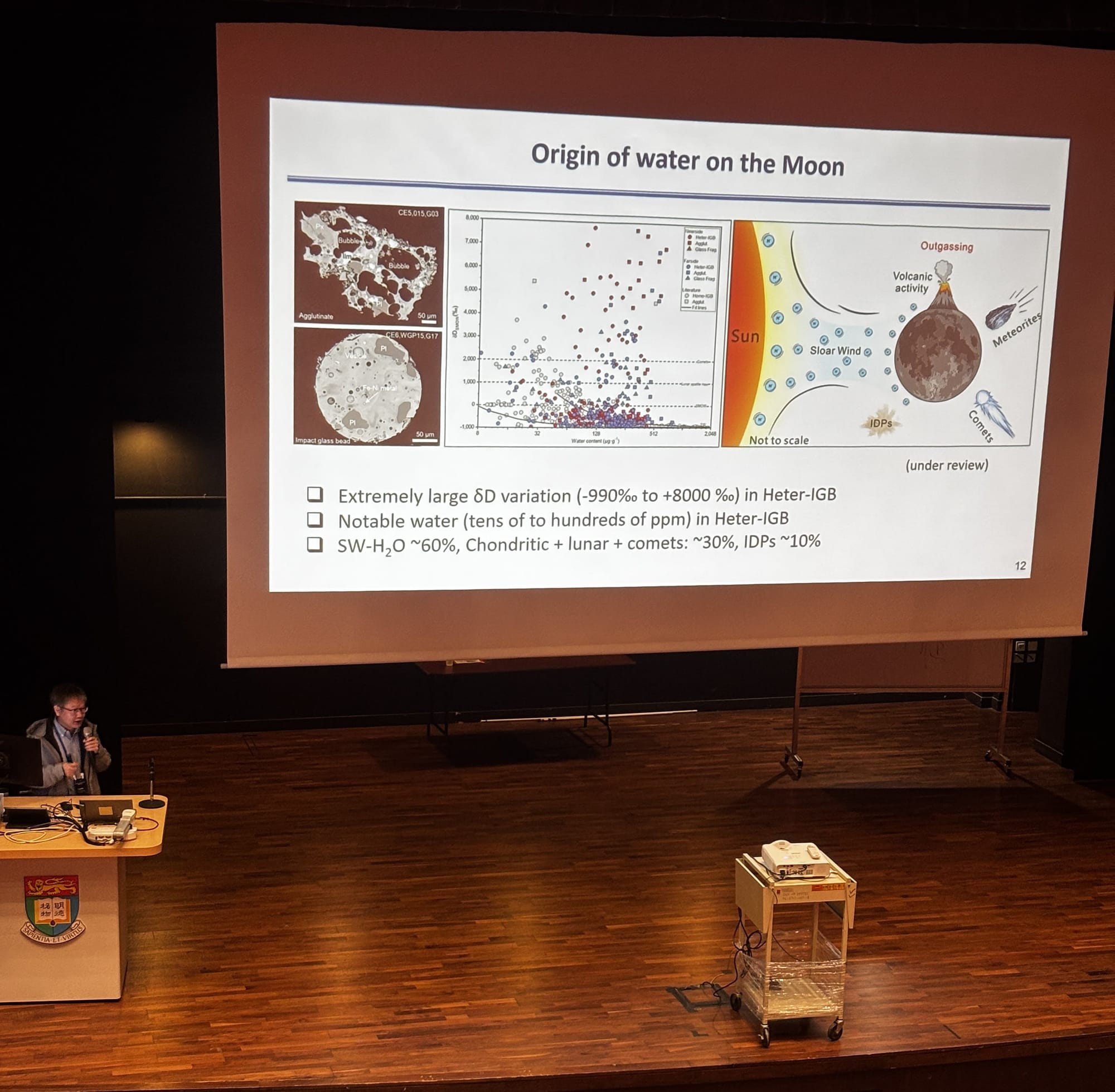
Qi Zhao of the Hong Kong Polytechnic University presented how China is making the largest 3D image dataset of lunar regolith particles to date. Relatedly, Ke Xu of Peking University spoke about the importance of better modeling how volatiles diffuse in lunar soil and rock structures to efficiently study and utilize water ice on the Moon on future missions. This work also allows for more efficient studies of the same sample grains across multiple institutions, using what Ke Xu called the “facial recognition system for regolith particles”.
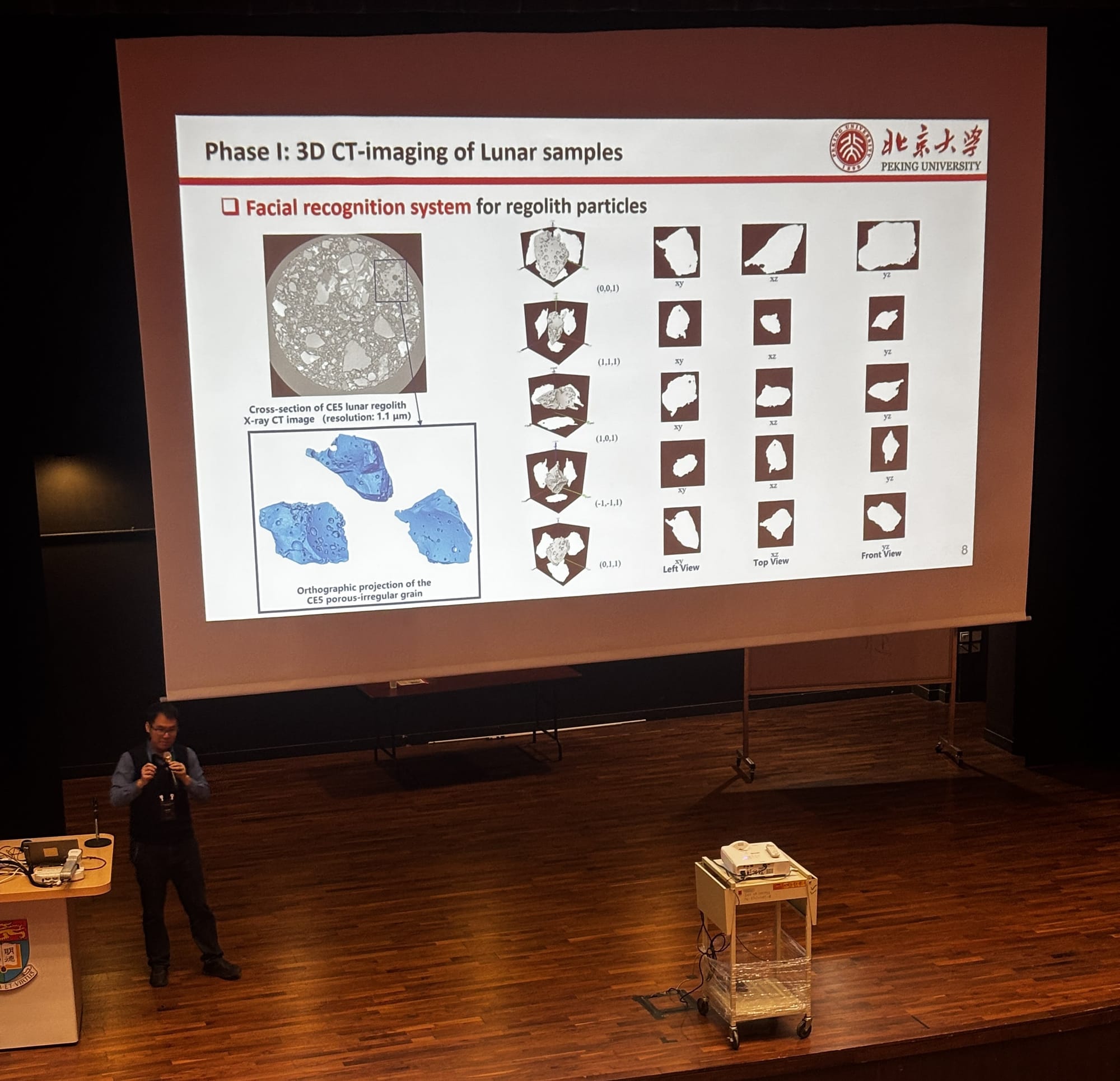
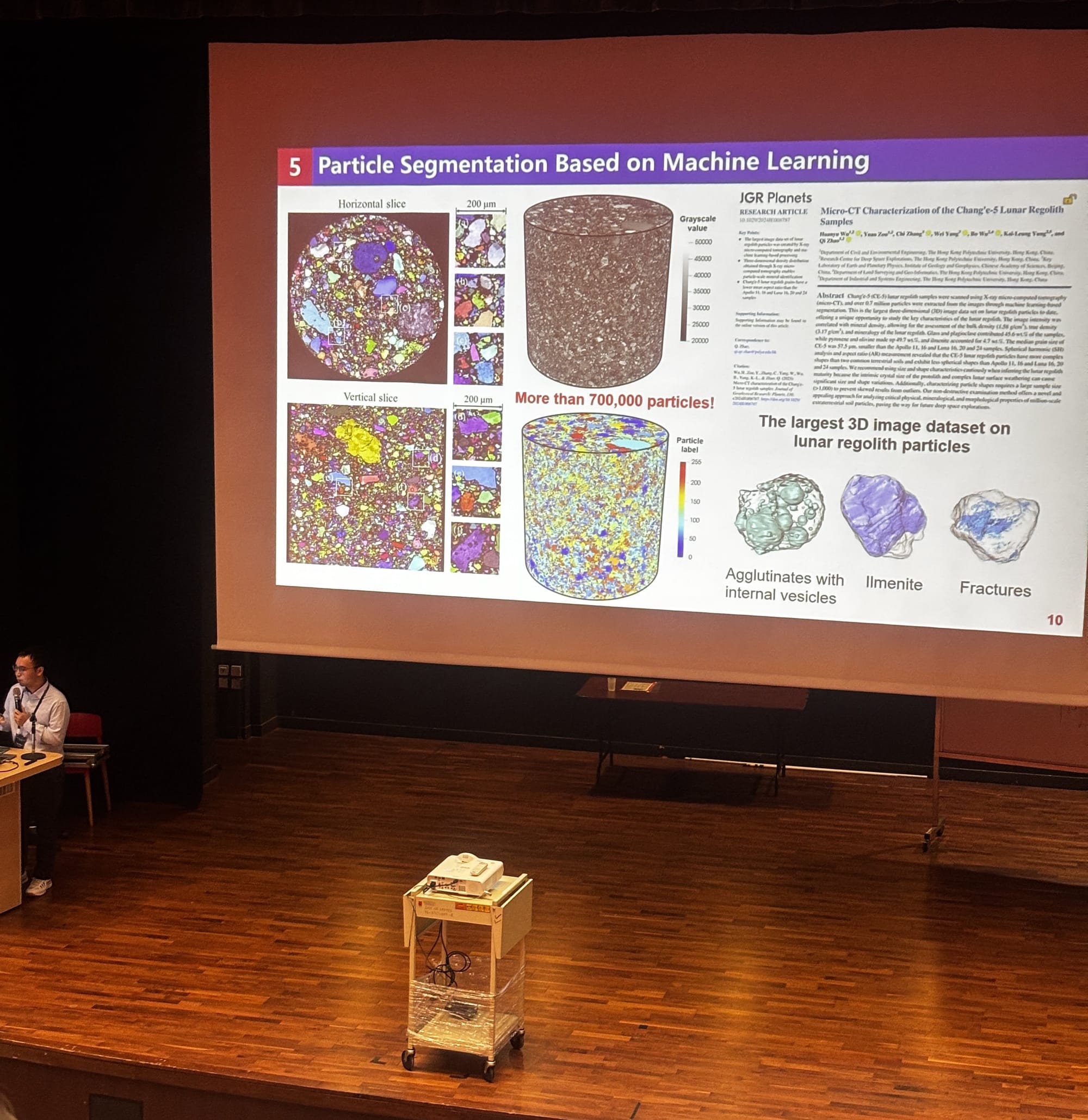
Alsabti Athem of the University College of London proposed studying supernovae remnants embedded in lunar soil. This is the context of the Moon’s regolith being a layered record of the interstellar medium and galactic environments our Solar System passed through and has been amid over time.

Sonia Tikoo of the Stanford University presented how soon after the Moon’s formation its global magnetic field deteriorated over time and how our understanding of the same has changed too with new evidence, including from Chang’e samples. Tikoo noted how combined with sample studies, targeted surface-based observations from the upcoming rover on China’s Chang’e 7 mission as well as the Lunar Vertex lander-rover instrument suite flying to the swirl of Reiner Gamma aboard Intuitive Machines’ third Moon mission will help resolve key mysteries related to the Moon’s magnetic evolution, which in itself it tied to that of the Moon’s evolution.
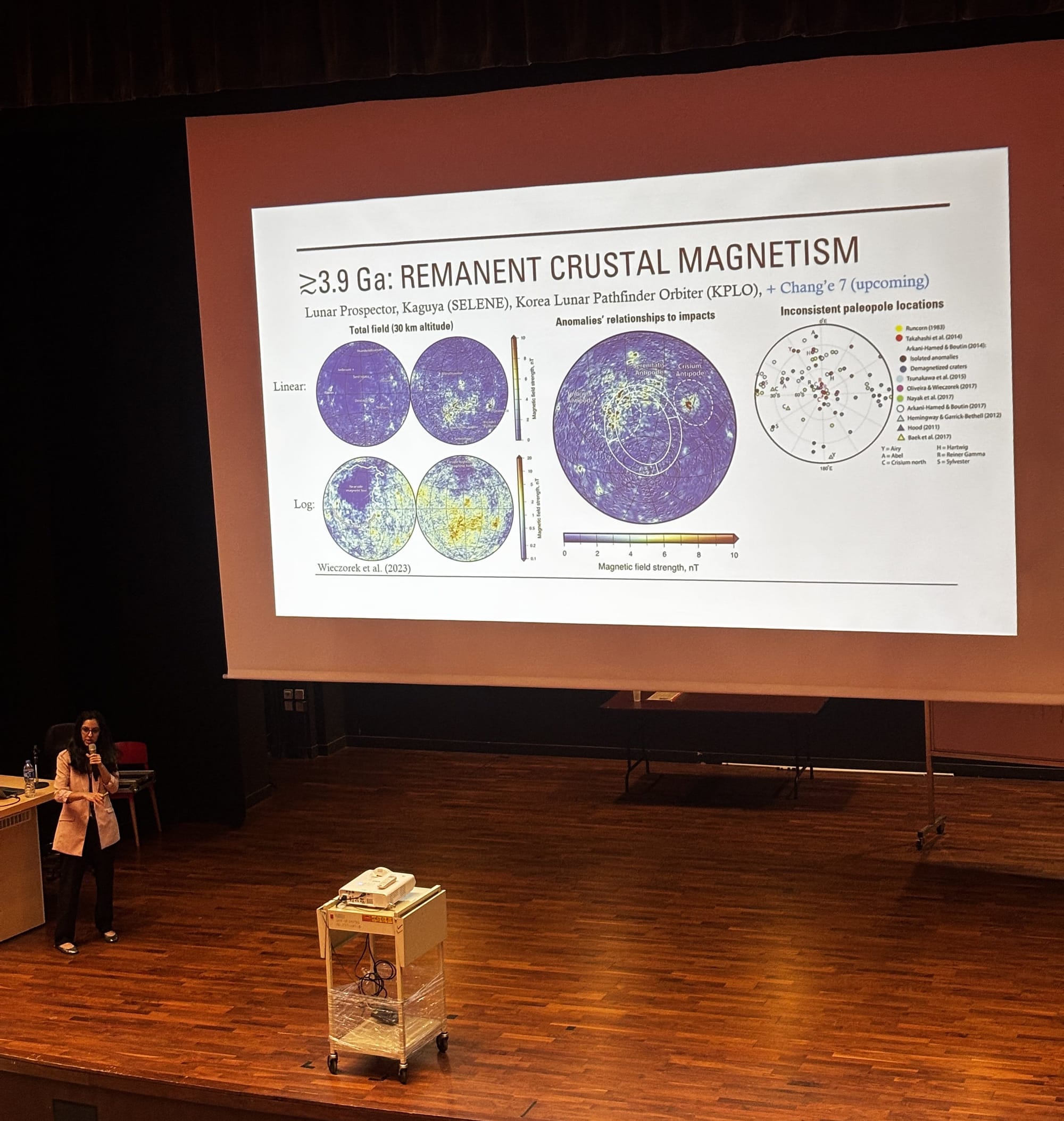
A related study result mentioned by Tikoo is about how micrometer-sized iron grains embedded in Chang’e 6 volcanic fragments have revealed a surprising increase in the global magnetic field strength of the Moon around 2.8 billion years ago, providing the first ground truth constraints for farside lunar magnetism. From the paper:
These results record a rebound of the field strength after its previous sharp decline of around 3.1 Ga [billion years ago], which attests to an active lunar dynamo at about 2.8 Ga in the mid-early stage and argues against the suggestion that the lunar dynamo may have remained in a low-energy state after 3 Ga until its demise.
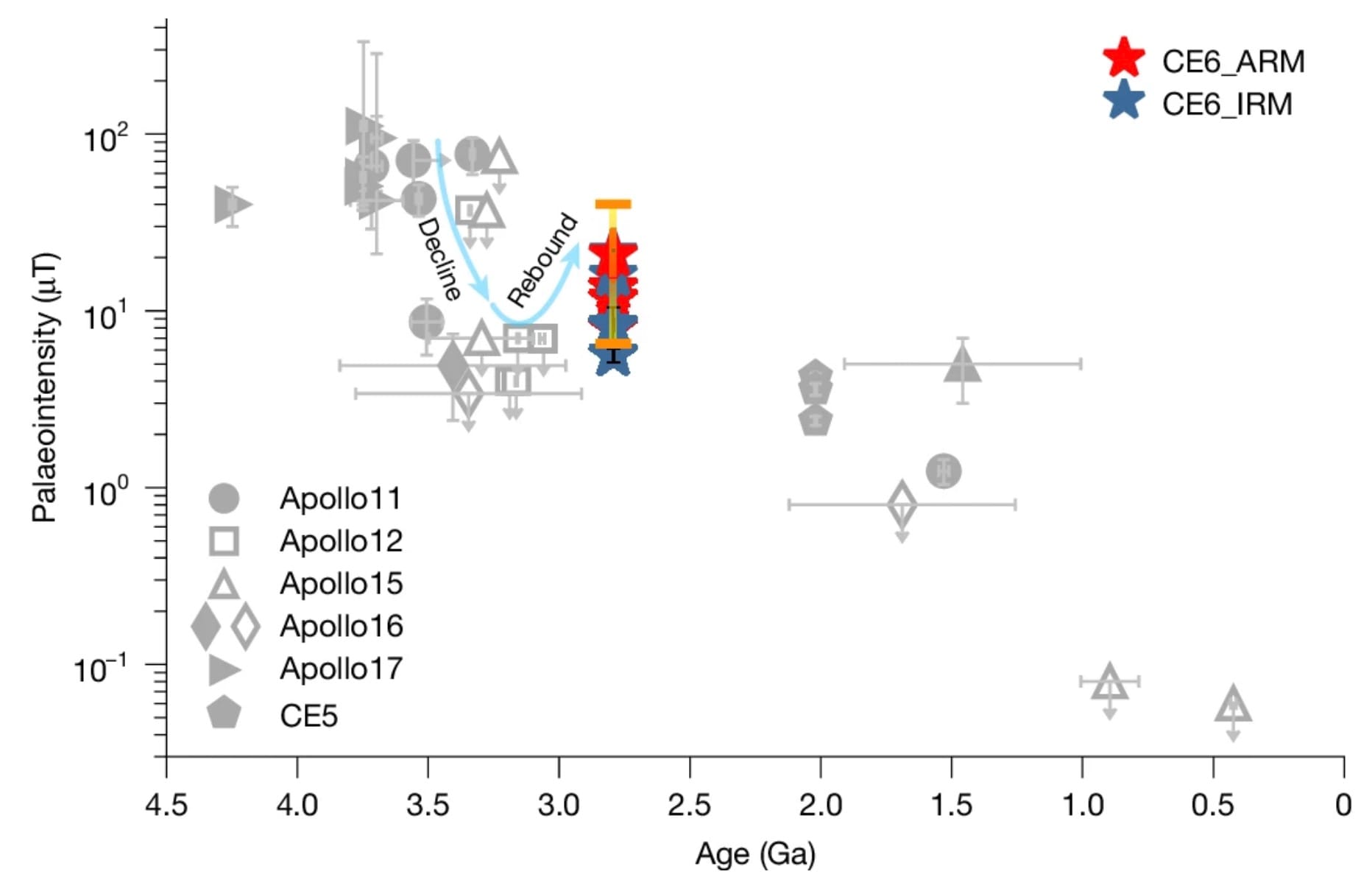
Researchers analyzing Chang’e 6 samples have also found the first hematite crystals (rust) on the Moon. The samples also contain the iron oxide of maghemite. The CNSA release captures the importance of the discovery as follows:
This discovery reveals a previously unknown oxidation reaction mechanism on the moon. It provides direct sample evidence supporting the origin of magnetic anomalies around the South Pole-Aitken (SPA) Basin. [...] The study proposes that hematite formation may be closely related to significant impact events in lunar history.
Lastly, Jatan Mehta (aka me) delivered a talk on India’s upcoming Chandrayaan 4 sample return mission and made the case for India and China to exchange lunar samples. 🌜...<>...🌛
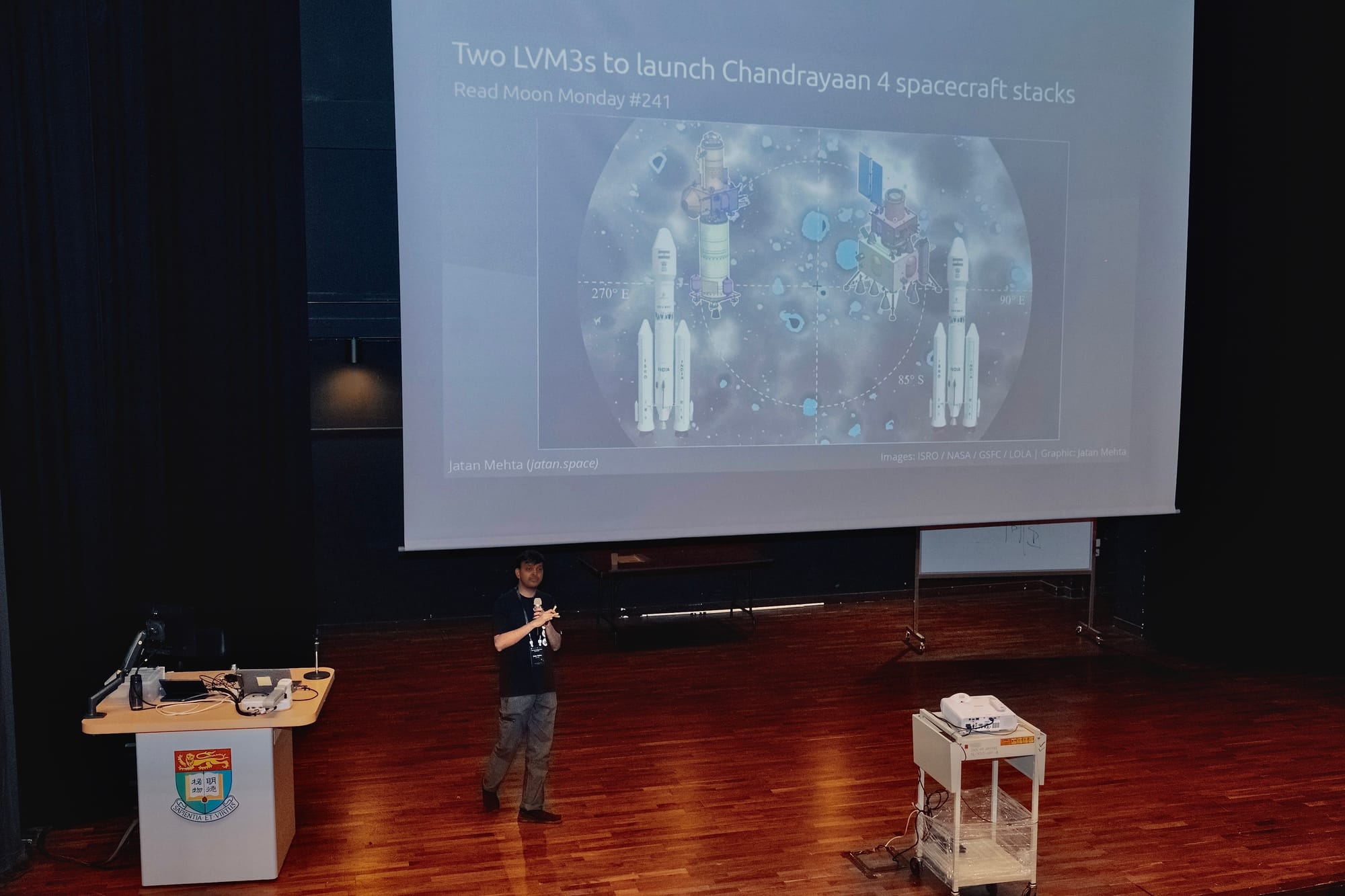
The lunar sample science symposium concluded with the organizers explicitly seeking feedback from international attendees, a good show of intent and effort. Wei Yang, a professor at IGG CAS and a symposium co-organizer, expressed a forward looking sentiment on behalf of the feedback received from the attendees:
I hope [that] in the future China and [the] US can exchange Moon samples.
This was in the context of China’s announcement earlier this year of the first set of international organizations whose proposals were selected to study Chang’e 5 samples. International researchers, including many who attended the symposium, are already analyzing the samples and expect to publish their findings soon whereas US researchers are facing access issues from the American side itself.
Note: There were even more notable results presented at the symposium but which I’m not including here because these works are yet to be published.
Many thanks to Space Age Publishing (ft. ILOA), Mahesh Anand and Sonia Tikoo for helping sponsor this week’s Moon Monday through my attendance of the lunar sample science symposium in Hong Kong!
If you liked this special edition of Moon Monday and appreciate my efforts to bring you this curated community resource on global lunar exploration for free, without ads, kindly support my independent writing:
